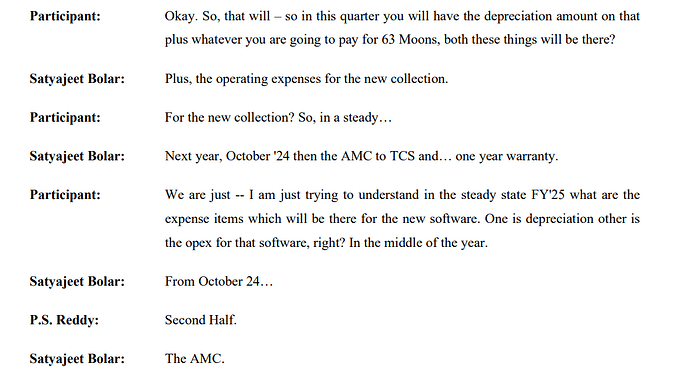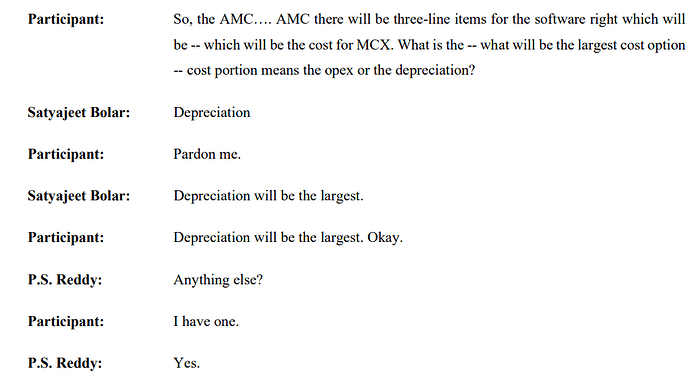Hi Vikash bhai…Given RBI tightening for unsecured loans and credit do you think RBL which is infamous for its malpractises for issuing credit card and personal loans, Do you still see some value left at p/b of 1 or am i missing something?
Posts in category Value Pickr
Phantom Digital Effects Limited (26-11-2023)
H1FY24 Conference Call recording link
Raymond – The Complete Man (26-11-2023)
Their core business was textiles. Diversifying the business is not a bad thing given the fact that the company is almost 100 years old and diversification is necessary.
Creating separate companies (lifestyle, real estate and engineering), each with its own management (and that too by professionals and not just family) brings focus
Textiles to real estate may sound odd but the trigger for that is the land bank they have. They could have just sold the land and taken the money and distributed it as dividends or invest further in core textile business. But they saw it as an opportunity to diversify and grow which seems to be working with the revenues they are generating
The latest acquisition of Maini precision looks little aggressive but it clearly shows that they want to de-merge engineering business as a separate entity and want to grow it
Phantom Digital Effects Limited (26-11-2023)
Phantom digital effects
Present revenue: 77 Cr,
Profit: 19 cr,
NPM: 25%
Guidance for FY 25 in the recent concall
Revenue: 135-150 Cr,
NPM: 25-30%
Profit: 34 Cr – 45 cr.
Mcap: 465 cr
TTM P/E 24.5
FY25 P/E 10.3 to 13.5 (as per guidance)
Since the company is in VFX and digital effects space which is a high growth industry, 10.3-13.5 P/E is reasonable.
Phantom Digital Effects Limited (26-11-2023)
Looks like people are loving the Ayalaan teaser
Ayalaan Teaser Review | Yogi Bolta Hai
Why not dub the movie into Hindi.
In their concall they mentioned that they worked for Kaalapani TV series as well. If anyone has already watched it, please do share your opinion on Kaalapani series.
StoveKraft – Kitchen Appliances Company (26-11-2023)
Not able to find any new news after the news came out anybody knows any update?
Multi-Disciplinary Reading – Book Reviews (26-11-2023)
Book Review: 1931: Debt, Crisis and The Rise of Hitler by Tobias Straumann
This is a very interesting book that explains the 1931 Sovereign Debt Crisis of Germany. Tobias Staumann argues that while the crash of 1929 led to a global recession, it was the 1931 sovereign debt crisis that transformed a global recession into a global depression.
After WWI, global balance sheets were nested and chain linked to one another. US was the largest creditor nation and Germany was the largest debtor nation. UK and France had to pay war loans to the US, and they in turn, to a large extent, relied on German war reparations. So the weakest link in this global debt chain was Germany and within Germany the weakest link was its banking sector.
Germany essentially had an unfunded long term liability of war reparations but war and hyperinflation had destroyed its capital base. So to rebuild the economy, to pay for reparations, and to fund unemployment benefits and social security programs it had to borrow. Most of this borrowing came from foreign short-term loans and deposits which were ‘hot money’ ie chasing higher yields (official rate in Germany was 2x that of UK and US) and which had to be rolled over every few weeks and months.
So Germany was structurally fragile to both a currency crisis and a banking crisis. At the first sign of trouble, foreign investors will start pulling money out of Germany. They would sell short term paper and/or convert their RM deposits into $ or gold, which would eventually push the German central bank to suspend gold convertability to halt the decline in their reserves. Moreover, since the deposits weren’t sticky, German banks would be forced to call their loans to meet their survival constraint.
Till 1930 such a crisis hadn’t come to pass for one important reason: these short-term foreign loans in practice were considered senior to war reparations in the capital structure. Germany if faced with a recession could delay making war reparations. So whenever Germany found itself in trouble it could raise rates to attract more deposits.
But all this changed after the 1930 Young Agreement. Germany now had to pay an unconditional annuity of RM650 million no matter what. Operationally this changed the seniority in the capital structure. Foreign loans now became junior to war reparations and annuity.
As it turns out this had some far reaching implications:
-
Germany could now no longer rely on foreign loans to fund reparations as investors priced in higher probability of default. So funding risk increased.
-
Germany now has to fund both war reparations and debt through a budget surplus (so that they have the money) and a trade surplus (so that they have forex/gold to pay). By 1929 Debt to GDP was 80%+ and the economy was contracting. Operationally this meant instead of adopting a counter cyclical policy of increased government spends and lower taxes, Germany has to adopt a pro-cyclical policy of lower wages, higher taxes, and reduced spending. And as the economy contracted Germany had to adopt multiple rounds of such austerity measures, which were deeply unpopular with the population.
-
This put the German government in a dilemma: if they renegade on repatriations it would lead to capital flight leading to a banking and currency crisis. If they continued to pay repatriation they would be forced to impose harsher austerity measures, which was politically unsustainable. Hitler and Nazi party had emerged as the second largest party to the surprise of many in 1930 and one of their election planks was to end reparations. More austerity would be mean political defeat for government and Nazi eventually forming the government.
Given the above the book answers the following questions through a political – economic – foreign policy lens :
- Why wasn’t Germany able to get additional bridge loans or credit lines from UK, US or France when these powers realized that a crisis is brewing?
- Why weren’t the original reparations ever renegotiated ? And why didn’t the US come out earlier to announce a debt moratorium on WW1 loans and reparations?
- What were the catalysts in the summer of 1931 which converted a regional funding crisis to a global liquidity crisis?
One thread I will pursue further is a financier named Felix Somary. He was among the very few people who was able to connect the dots of the impending global depression, repeatedly warned governments and central bankers. He also moved his client money out of the markets before the above events took place. In 1927 when Keynes disagreed with him on an impending crisis, Keynes asked Somary where does he foresee a crisis coming from. Somary replied “from the gap between appearance and reality” and from “fundamental global imbalances that were about to unwind in a chaotic way”
Highly recommended. 9/10
Is Buy and Forget a Myth? (26-11-2023)
I would agree that, 3 Years is a reasonable period for the stock.
My philosophy also revolves around investing for 3 to 5 years. Typically for Large Caps, 3 years could be reasonable period and for Small Caps, waiting for more time makes sense unless Stock becomes extremely overvalued, Business fundamentals worsen or Management Quality is degraded within 5 years.
During tough times, Small Caps will test your patience, and Large Caps turn around relatively faster after tough time (Similar to 2008-09 and 2018-19).
Apart from this, there could be some candidates which you can hold for 8 to 10 years as well.
These are some observations from my investment journey. These are not the suggestions.
Natco Pharma: Focusing On Complex Products (26-11-2023)
For the Q2 concall, I think the most important question was company’s assessment on the latest observations from USFDA for Kothur facility.
Saumil Shah: So congratulations on a good set of numbers. So I wanted to know the impact of eight observations for our Kothur plant on our revenue for the current quarter. And by when we can clear these observations because it’s almost a month now?
Rajeev Nannapaneni: The inspection happened in the month of October, as you’re aware. So on November 8th, we have responded. You’re given 15 working days to respond. NATCO Pharma Limited November 15, 2023
So on November 8th, we’ve answered the given our reply to the observations and our
rectification and remediation plan based on the observation. Typically what happens is it takes about 90 days for them to make a classification of the observation. So I think 90 days starts from November 8th. So that’s on the FDA side. In terms of impact, I think the impact will be minimal because I think the company has always done this mitigation with their top products. As you’re aware, I think all our top revenue items, our top five, six revenue items have an approval from our Vizag site in addition to the Hyderabad Kothur site. Lelanomide also, which is the biggest revenue item, is also having approval from both Vizag and Hyderabad. Except for two strengths, which are 2.5 mg and 20 mg, which is about 7% of the total lelanomide. So even that also we have done the batches. It’s on stability, started stability. So we believe if you do 90 days stability and it’s a procedure called CB30. If that is also done, then even that can be moved. That was already on the way, so that is also planned. Overall, I think our impact will be minimal. So I think let’s wait for the classification of the inspection and we’ll make a decision. But as we plan every project, I think we always have a two-side strategy for all our top five



